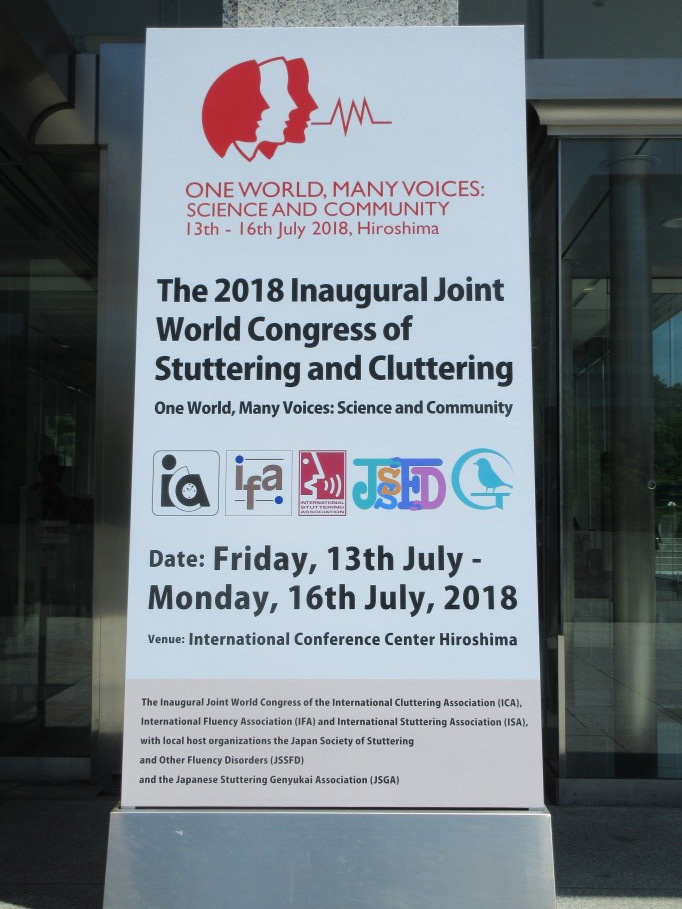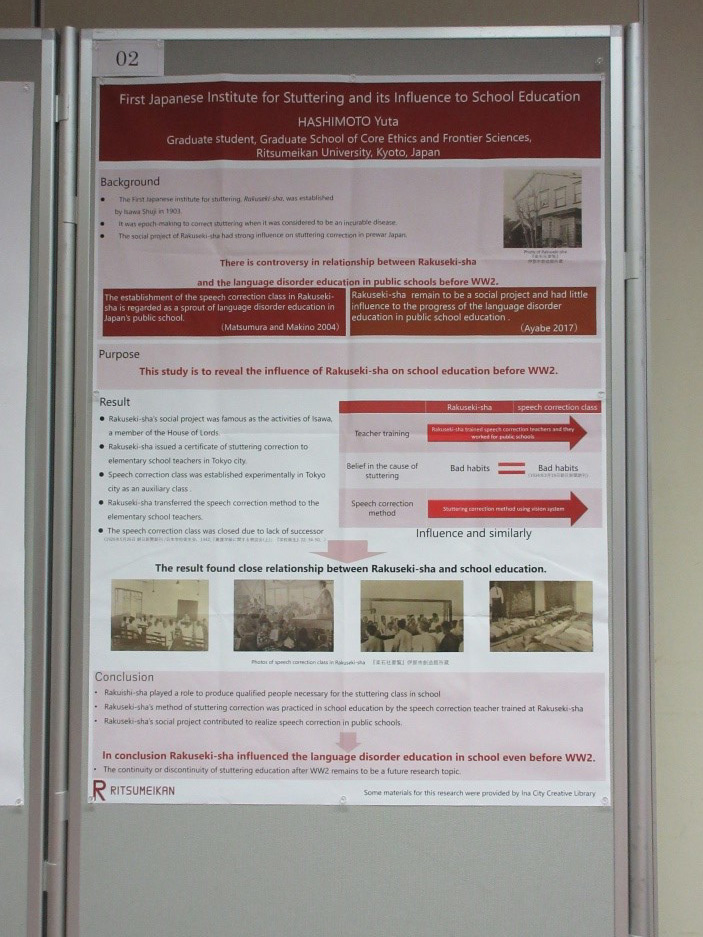History of Stuttering at School in Japan
My field of specialization is education. I am currently conducting research on the history of stuttering at school in Japan to consider how the education for children with speech disorders should be. Stuttering is a speech problem characterized by repetitions, pauses, or drawn out syllables, words, and phrases. As the cause of stuttering remains unknown, it cannot be cured.
The reason I focus on school in Japan is that children with stuttering are required to speak fluently in classes etc. although they have difficulty doing so, which makes them feel painful. It has caused my awareness of why children with stuttering are not allowed to speak disfluently at school. How has such educational thought been formed? I am advancing my research on the history of stuttering at school in Japan between Meiji era and the present in order to figure this out.
The ‘One World, Many Voices: Science and Community’ Congress was held in Hiroshima in July 2018. Participants of this congress comprises professionals, clinicians, and several groups by people with stuttering and cluttering. The Congress provided opportunities for people who are involved in stuttering in the world to interact with each other, which enabled them to discuss stuttering freely regardless of their positions.
At the Congress I conducted a poster presentation regarding a class for children with stuttering, which was part of the education for children with speech disorders in prewar Japan. It is said that the history of stuttering in Japan started with Rakusekisha, which was an institution for correcting stuttering. As its way of correcting stuttering had some positive effect temporarily, it spread throughout the country. Consequently, the school education in prewar Japan also provided the correction of stuttering on a trial basis. It is the theme I dealt with in my poster presentation. In my presentation I received some questions including what method was used for correcting stuttering at that time, which enabled us to deepen the discussion regarding the way of correcting stuttering in prewar Japan.
However, the class for students with stuttering was provided at only a few elementary schools on a trial basis. And it was gone by the end of World War II due to shortage of successors etc. After World War II, speech pathology was introduced to Japan from the U.S, which enabled the education for children with speech disorders to spread throughout the country to form the foundation for the current education for children with speech disorders. In 1970s “Kotoba no Kyoshitsu” (Classroom for speech), which provides guidance and training for children with speech disorders including stuttering, spread throughout the country. The postwar education for children with speech disorders has had the similar framework as the prewar one which corrected stuttering. However, an educational thought has arisen which rejects the correction of stuttering on the other hand. Such thought has come to be accepted in the education for children with speech disorders. And the direction of the education for children with speech disorders has changed—it aims not only to improve stuttering but for children with stuttering to live with it through the adjustment of their environment. However, recently, medical treatment aiming to improve stuttering has been implemented on a trial basis again. I would like to consider how the education for children with stuttering should be based on the postwar education for students with stuttering as well as the prewar one.
To summarize, the education for children with speech disorders in Japan started with correction of stuttering. Then a negative thought about the correction of stuttering has arisen, allowing children to regard stuttering as one of their individualities. However, recently, some movement has arisen which aims to improve stuttering. That is, the education for children with speech disorders has been swinging between correction of stuttering and rejection of it. Therefore, I think that we need not only to look at stuttering itself but also to look at the education for children with stuttering.
HASHIMOTO Yuta













